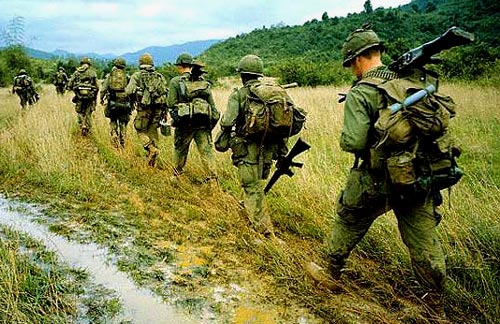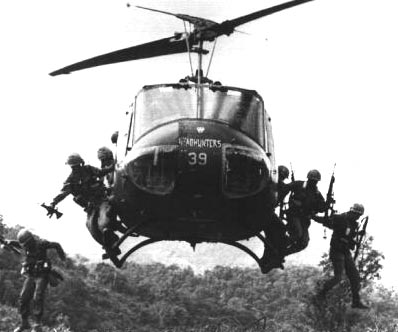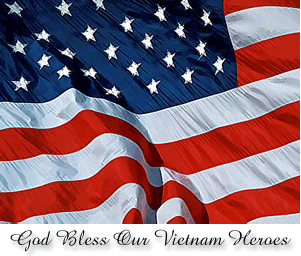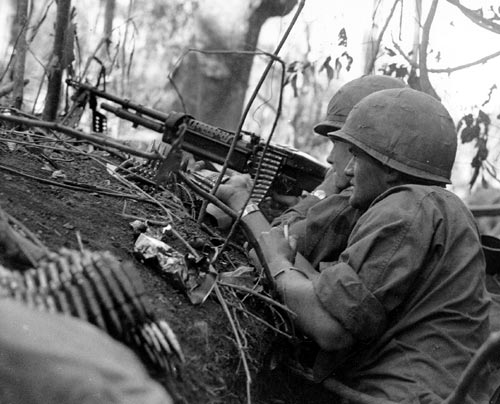
The Vietnam War
by Kevin Caruso
These are the most important things for Americans to remember about the Vietnam War:
- More than 58,000 Americans died.
- More than 300,000 Americans were wounded.
- More that 2,500,000 Americans served.
- ALL of the Americans who served honorably in the war are HEROES.
Now, for some details about the war – but please never forget the most important things above.
The roots of the Vietnam War started in 1946 with the beginning of the First Indochina War. Vietnam was under French control at that time (as was Laos and Cambodia), and the Vietnamese, under the leadership of Ho Chi Minh, wanted independence. So the Vietnamese and French fought each other in Vietnam.
Eventually, in 1954, the Vietnamese defeated the French and both countries signed the Geneva Peace Accords, which, among other things, established a temporary division in Vietnam at the 17th parallel. THIS DIVISION OF THE COUNTRY EVENTUALLY LED TO THE VIETNAM WAR.
The Geneva Accords stated that the division was to be temporary, and that national elections in 1956 would reunite the country.
But the United States did not want to see Vietnam turn into a communist state, so the U.S. supported the creation of the Southeast Asia Treaty Organization, which provided defense for South Vietnam.
North Vietnam, then called the Democratic Republic of Vietnam, wanted a communist state, and South Vietnam, then called the Republic of Vietnam, wanted a non-communist state.
In 1956, Ngo Dihn Diem, an ardent anti-communist, won the presidential election in South Vietnam. But communist opposition in the south caused Diem numerous problems.
And in 1959, southern communists decided to implement greater violence to try to oust Diem. This led to the formation of the National Liberation Front (NLF).
The NLF was a group of communists and non-communists who opposed diem and sought his ouster.
In 1961, President John F. Kennedy sent a group to South Vietnam to determine what actions the U.S. needed to take to assist them. When the group returned, they proffered recommendations in what became known as the “December 1961 White Paper.”
This “White Paper” indicated a need for an increased military presence, among other things; but many of Kennedy’s advisors wanted a complete pullout from the country.
So Kennedy compromised and decided to increase the number of military advisors, but not to engage in a massive military buildup.
But in 1963, Diem’s government quickly began to unravel. The downfall began when Diem’s brother accused Buddhist monks of harboring communists -- his brother then began raiding Buddhist pagodas in an attempt to find these communists.
The Buddhist monks immediately began protesting in the streets, and in Saigon on October 5, 1963, one monk died by self-immolation (see picture below).
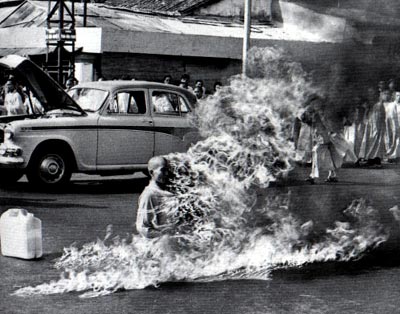
A Vietnamese Monk's Self-Immolation Protest Against Diem
The above picture caused international outrage and Diem was soon overthrown and killed.
On August 2, 1964, North Vietnam attacked an American ship in the Gulf of Tonkin. Afterwards, congress passed the Gulf of Tonkin Resolution, which granted the president broad war powers.
Lyndon B. Johnson was the presiden at the time, and the Gulf of Tonkin incident and the resultant resolution marked the beginning of America’s major military build up in Vietnam War.
In 1965, massive bombing missions by the U.S. in North Vietnam, known as Operation Rolling Thunder, quickly escalated the conflict.
North Vietnam, who had hoped for a quick victory early on, then realized that such a victory was not possible, so they adopted a "protracted war strategy"; that is, they hoped to drag the war out as long as possible and cause the U.S. to eventually pullout.
The Vietnam War did indeed become protracted, and by 1968 the Johnson Administration had an additional problem to deal with: massive anti-war protests in the U.S.
And the heavy protesting against the war in the U.S. caused another change in strategy for North Vietnam – they decided to launch a major offensive, which became known as the Tet Offensive.
But the Tet Offensive did not go as planned for the North, and they suffered massive casualties.
But by now, U.S. citizens were very critical of LBJ’s handling of the war, and Johnson decided not to run for re-election.
Richard Nixon became the next president, and his war strategy included increasing the air war over North Vietnam, extending the war into Laos and Cambodia, and slowly bringing the troops home.
Finally, in 1972, peace agreements talks between the U.S. and Vietnam were nearing a conclusion, but in December of 1972, Nixon called for heavy bombing of the largest cities of North Vietnam (later known as the Christmas bombings).
These bombings were harshly criticized by the international community, and Nixon felt compelled to end the war. And on January 27, 1973, the Paris Peace Accords were signed, which led to a complete withdrawal of U.S. troops by March 29, 1973.
And with the U.S. troops gone, it was only a matter of time until North Vietnam overtook South Vietnam, which occurred with the fall of Saigon on April 30, 1975, thus marking the true end to the Vietnam War.
